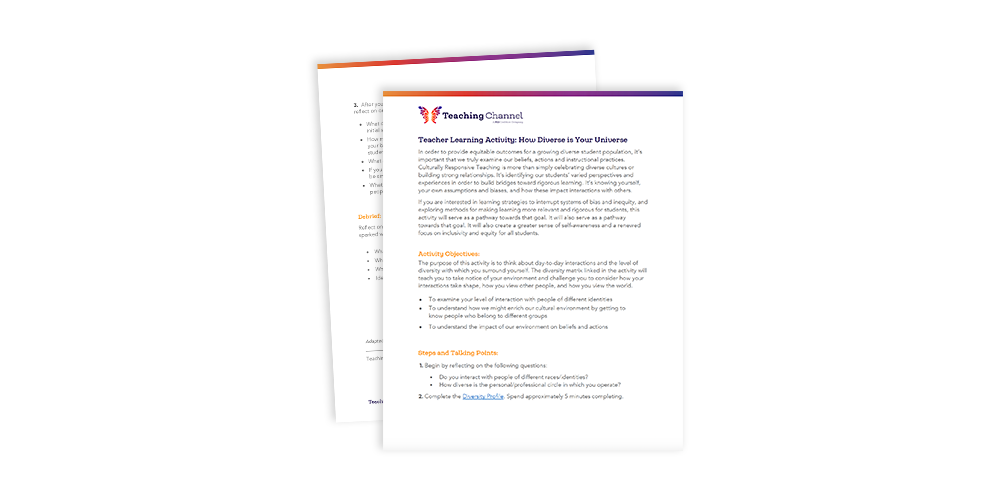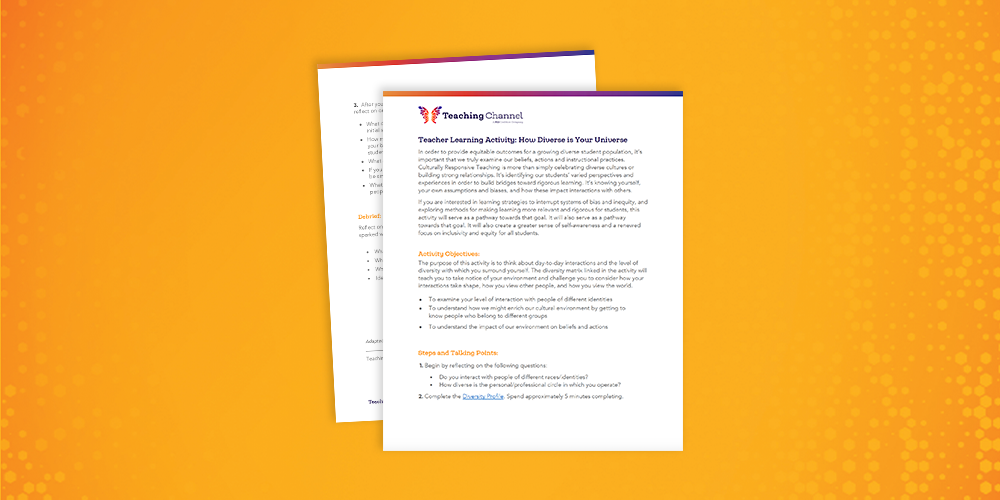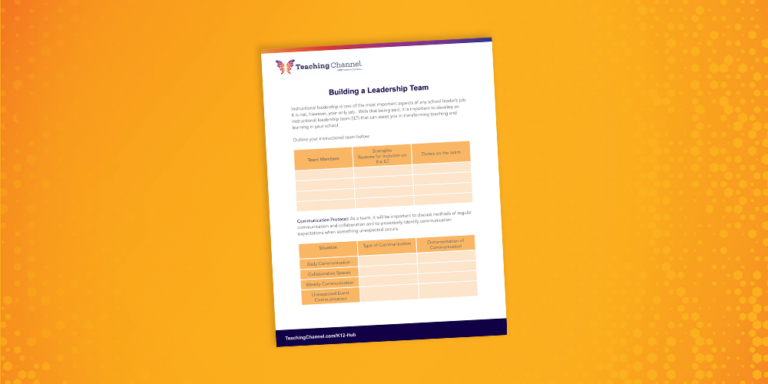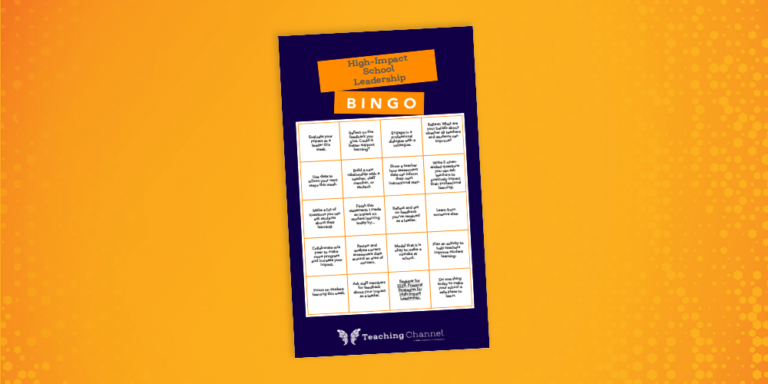In order to provide equitable outcomes for a growing diverse student population, it’s important that we truly examine our beliefs, actions, and instructional practices.
Culturally Responsive Teaching is more than simply celebrating diverse cultures or building strong relationships. It’s identifying our students’ varied perspectives and experiences in order to build bridges toward rigorous learning. It’s knowing yourself, your own assumptions and biases, and how these impact interactions with others.
If you are interested in learning strategies to interrupt systems of bias and inequity, and exploring methods for making learning more relevant and rigorous for students, this activity will serve as a pathway toward that goal. It will also create a greater sense of self-awareness and a renewed focus on inclusivity and equity for all students.

Activity Objectives:
The purpose of this activity is to think about day-to-day interactions and the level of diversity with which you surround yourself. The diversity matrix linked in the activity will teach you to take notice of your environment”…and challenge you to consider how your interactions take shape, how you view other people, and how you view the world.”
- To examine your level of interaction with people of different identities
- To understand how we might enrich our cultural environment by getting to know people who belong to different groups
- To understand the impact of our environment on beliefs and actions
Steps and Talking Points:
- Begin by reflecting on the following questions:
- Do you interact with people of different races/identities?
- How diverse is the personal/professional circle in which you operate?
- Complete the Diversity Profile from Teaching Channel. Spend approximately 5 minutes completing.
- After you have completed the profile, converse with friends or colleagues to reflect on or discuss the questions below:”
- What did your visual representation show you? Did it confirm or contradict your initial statement?
- How might your interactions with people outside of your identity group affect your beliefs and actions? How might these interactions affect your work with students?
- What are the benefits of intercultural interaction?
- If you were to do this same activity with your students, how might their answers be similar or different from yours?
- What are some suggestions for people to increase their level of interaction with people who are different?
Debrief:
- What was it like to do this activity?
- What surprised you about your interactions?
- What are you taking away from this activity?
- Identify one or more commitments you will make to broaden your circle.
Adapted from A Booklet of Interactive Exercises to Explore Our Differences, Stockton University (2011)






